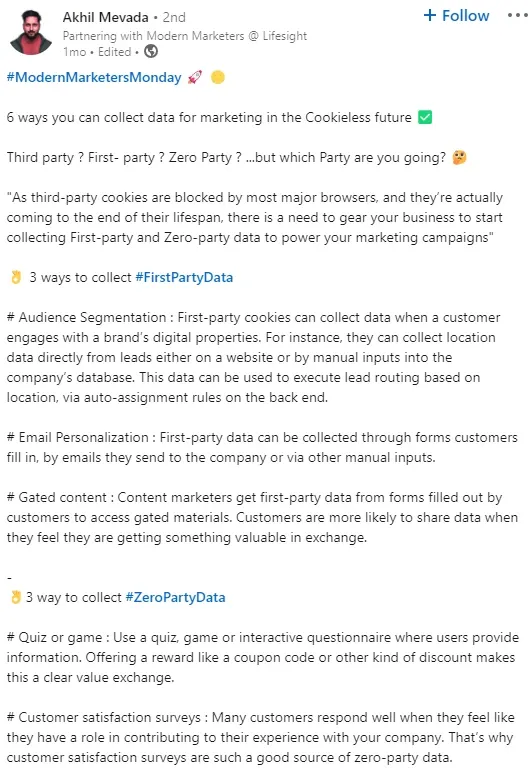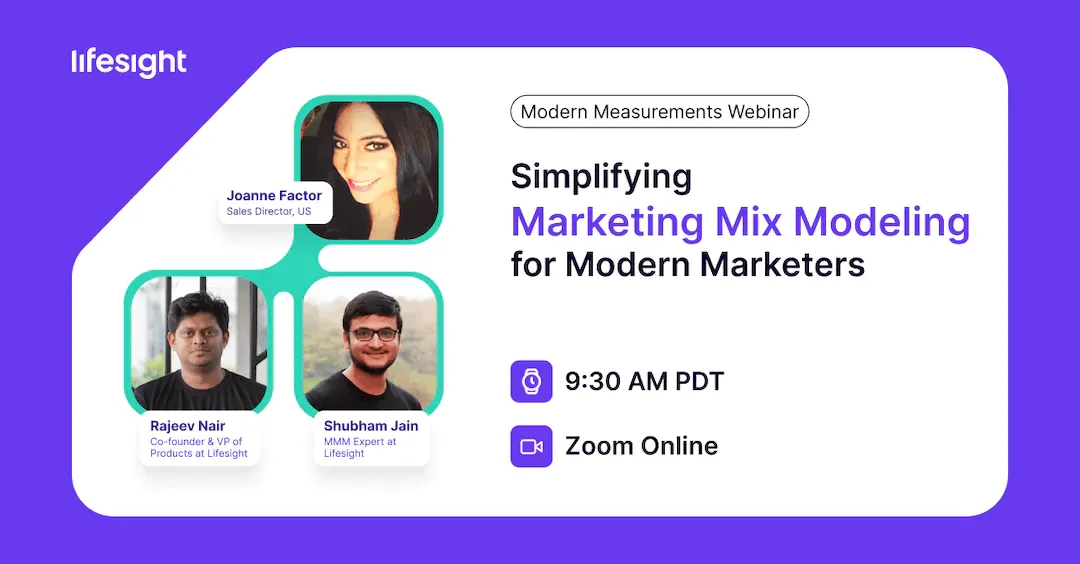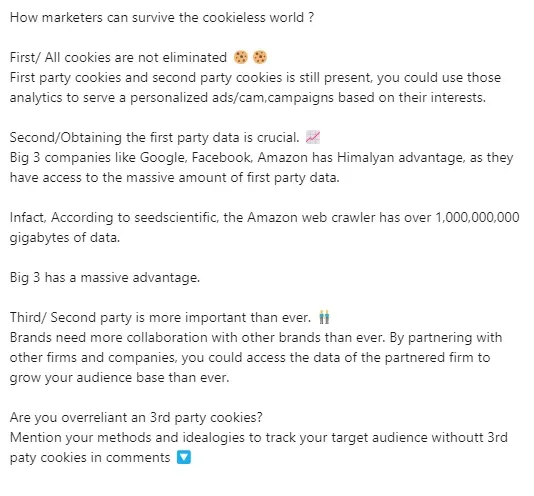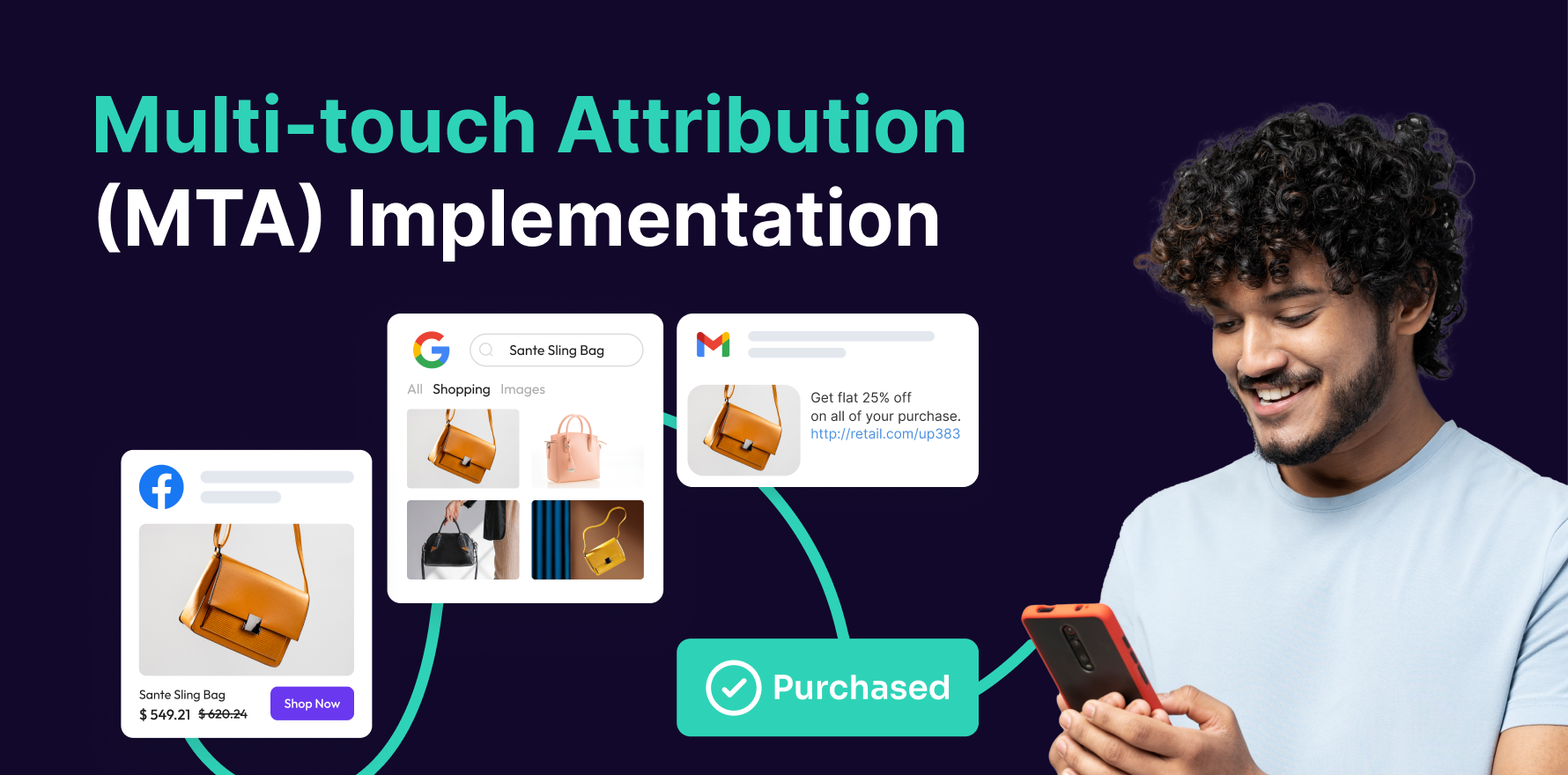Third-party cookies have been the most potent tool in online advertising for decades, enabling businesses to collect data on customer preferences, behaviors, and demographics.
However, privacy regulations have evolved since, and with this, the digital landscape is transitioning into a cookieless world. Consumer privacy acts like GDPA (General Data Protection Regulation) and CCPR (Central Consumer Protection Authority) around data privacy have pushed Google Chrome, Firefox, and Safari to block third-party cookies entirely.
As third-party cookies crumble away, businesses face the challenge of navigating a cookieless landscape.
Let’s look at some data around this:
- A Statista survey suggests only 32% of users accept cookie consent banners.
- A report by eMarketer says that 82% of marketers are worried about how well they can target customers without third-party cookies.
- The Future of Marketing 2023 report from Econsultancy, which surveyed more than 800 marketing professionals to find out what trends are shaping the industry, shows that only 8% of marketers say they are “Fully prepared” for the upcoming cookie crackdown, while 22% say they are “Mostly prepared.”
It’s now imperative for marketers to create a new system adaptable to these further limitations, build toolkits, and brace themselves for this new environment. We understand new-age marketers’ challenges in this cookieless future, so we have compiled a guide to help you navigate this new era and stay ahead of the curve.
The Challenges Ahead
Losing third-party cookies means rethinking the way we target and understand customers online. For businesses, this presents challenges in:
- Targeted Advertising: Personalized ads based on browsing history will become a thing of the past.
- Data Collection: Gaining insights into customer behavior will require different approaches, as businesses will lose a significant source of analytics data.
- Customer Engagement: The ability to track and analyze customer touchpoints along their buying journey will be impacted.
- Retargeting Efforts: Businesses must find new methods for retargeting customers without being overly invasive or breaking data protection laws.
However, instead of mourning the absence of third-party cookies, it’s time to look at the bright side. This new normal has opened up a new world of possibilities for ethical and transparent data collection and advertising strategies.Let’s explore the possibilities in this new normal.
7 Ways to Prepare for a Cookieless Future
Below are the ways explained on how to prepare for cookieless future.
1) First-Party Data
First-party data is all about collecting accurate, up-to-date customer information through your website, digital, or social strategies. The hook is often a value exchange, like offering an early-bird discount, a coupon code for future purchases, or a newsletter subscription.
Unlike the hit-or-miss nature of third-party data, first-party data is specifically about your business and your audience, making it high-quality and reliable. This top-notch information allows you to build real connections with your customers by offering personalized products and deals they want. Not only does it improve the user experience, making your platform feel like a personalized space, but it also lets you make data-driven adjustments to your strategy in real-time.
Akhil Mevada, Head of Partnerships at Lifesight, speaks about six ways to collect first-party and zero-party data here.
First Party Data by Akhil
Moreover, Next-gen CDPs can help you aggregate and analyze this data to create unique customer profiles that help personalize content. Also, customer segmentation becomes more nuanced and compelling with detailed first-party data. You can create segments based on buying behavior, browsing history, and geographic location, allowing for highly targeted marketing campaigns.
Whether it’s product recommendations or targeted email marketing campaigns, first-party data offers the granular insights needed to measure what’s working and what’s not, thus enabling real-time adjustments for better results.
2) Marketing Mix Modeling
Marketing Mix Models (MMM) are becoming increasingly relevant in the cookieless era, and here’s why: The data you need for MMM is readily available, and MMM doesn’t need customer personally identifiable information (PII).
But that’s not the only reason brands are turning to MMM. Nowadays, the whole MMM process has sped up. Unlike the old days, when building an MMM could drag on for months, the modern ones are much quicker. Now you can feed data and run models in 20 minutes with automated MMM solutions like Lifesight. This means businesses can get actionable insights way faster, which is a big plus for those wanting real-time info.
The evolved MMM approach can dive deeper into data. With most digital campaigns quickly impacting brand awareness, businesses must stay in the loop and adjust their strategies for better results. MMM can be tweaked to consider more detailed data, like weekly or daily figures.
MMM fits right in with today’s digital age, especially with e-commerce booming. Brands want to know which campaigns truly boost online sales, and many are discovering the power of MMM to provide that clarity. Whether understanding the most effective social media platforms or identifying high-return campaigns, MMM is the tool brands are turning to.
If you want to learn how to use marketing mix modeling to enhance your brand’s ROAS, this webinar is for you!
MMM webinar lifesight
3) Time-and-Location-Based Messaging
Location-based software (LBS) is designed for mobile applications that collect the geo-location of a device in real-time using various location technologies. As of 2022, there were 7.26 billion mobile users worldwide, projected to reach 7.49 billion by 2025. With a vast population using mobile, most companies have mobile apps for their web storefronts. They can integrate LBS in their app to track the geographic location of a user and send alerts about the nearest physical store (we are near you, special offer in a store near you, etc.). Thus, instead of behavioral tracking via cookies, time-and-location-based messaging offers another route to personalization.
4) Contextual Targeting
Like keyword targeting, contextual targeting means placing an advertisement next to relevant content. Here, instead of targeting and showcasing information-based customer behavior, it’s done based on what is being searched more. So, for example, if you are selling protein supplements, you could buy real estate to place ads on a blog about nutrition, diet, and exercise or a medical research paper emphasizing the importance of protein intake for better health. Contextual targeting, a long-standing practice in advertising, has become more relevant in a cookieless environment.
5) Embrace Dynamic Search Ads (DSAs)
Dynamic Search Ads are a great way to target the most popular search keywords that traditional ads may miss. How do DSAs work? DSAs analyze your website, identify the most trending keywords relevant to your business, and automatically create advertisements with those keywords. DSAs are the perfect solution for capturing new search queries and increasing your campaign’s impression share. DSAs use your website’s titles and page content to generate keyword-targeted ads. To ensure the success of DSA campaigns, ensure your website content is structured correctly and SEO optimized.
6) Smart Shopping Campaigns for Customer Acquisition
A shopping ad format launched by Google in 2018, Smart Shopping Campaigns leverage machine learning capabilities and automation to place ad campaigns optimally across all Google platforms, such as YouTube, Gmail, Google Search, and more. To make the most of Smart Shopping Campaigns, having a well-structured product feed (product information such as product title, description, images, and price details) is a non-negotiable as Google generates and displays ads using this information.
With its intelligent machine learning algorithm, Google analyzes user behavior, device, location, and many other attributes and displays ads to customers at the right time to ensure maximum conversion. Thus, by leveraging intelligent algorithms and Google’s vast reach, businesses can drive new customer acquisition without the need for cookie-based tracking with smart shopping campaigns.
Here’s a YouTube video from Google Ads showing you how to start with Smart Shopping campaigns.
7) Leveraging Second-Party Data from Industry Leaders
Second-party data refers to another company’s first-party data, which the data-owning company agrees to share by signing a contractual agreement. Usually, data is shared using two modes: sharing data files and dropping a data container on the website.
Businesses in the same or complementing trades get into such agreements. Also, partnering with platforms like Google and Facebook provides opportunities to gather aggregated, insightful, second-party data.
Karthikraja Jothinathan, a Marketing and Branding Expert, advocates using second-party data in this LinkedIn post.
Karthikraja Jothinathan, teaches on second-party data
Closing Thoughts
With a more aware and data privacy-conscious consumer, transitioning to a cookieless future is a given. The disappearance of third-party cookies doesn’t spell doom but rather presents an opportunity to innovate and optimize your advertising strategy. The cookies may have crumbled, but they have ushered in newer, more transparent, and innovative ways of gathering customer data.
If you want to stay ahead of the curve in this cookieless era, Book a free demo with us today.
You may also like
Essential resources for your success



















